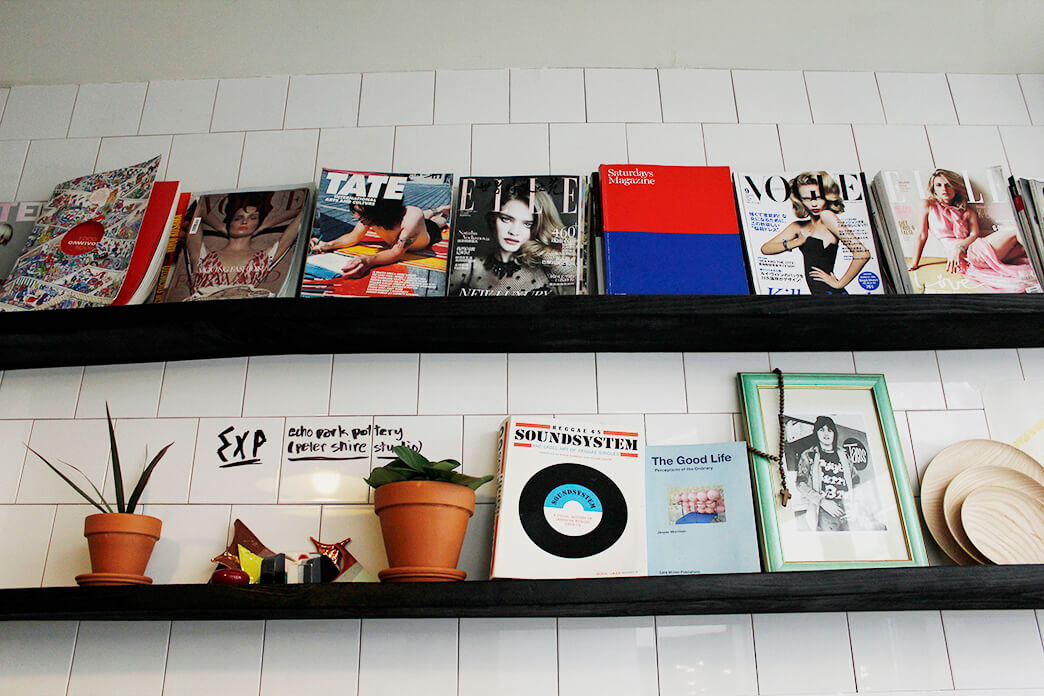Tieka Coffee Flavor description Variety planting Development Historical Story introduction of Variety allusions in producing areas

For professional baristas, please follow the coffee workshop (Wechat official account cafe_style)
The information about "coffee variety" is not easily noticed by coffee users in the early days, and it is often the roasters or players who are slightly concerned about it, but they are not too deep and persistent, because the former is concerned with price and sales channels, while the latter focuses on the improvement of baking skills. The problem of "coffee varieties" will be addressed squarely, mostly by agronomists, botanists, coffee farmers and coffee lovers who like fine coffee (Specialty Coffee). With the improvement of Chinese people's culture of high-quality coffee in recent years, the number of their own roasters is increasing day by day. Coffee trade is no longer just a business that can be played by large-market merchants. Gradually, a small number of people raise funds to buy raw beans directly from the origin or participate in international bidding activities for raw beans. Coffee varieties are also gradually getting the attention of buyers.
The structure of this article is mainly based on the "Variety Is the Spice of Coffee" written by Willem Boot in Roast Magazine (May | June 2006). Since Willem Boot himself is a roaster and a lover of fine coffee, after the idea of buying land to grow coffee (the author guesses that it should be funded to hire local coffee farmers to grow it), he actually went to Panama to inspect and found that Panama is very suitable for growing coffee regardless of temperature, rainfall, altitude, soil quality and other conditions. The first question that Willem Boot has to face is no longer "should we invest here to buy land?" But "what kind of coffee should be chosen to grow?" Because it takes at least three years for coffee trees to mature from seedling to harvest, any decision made now will affect the next three-five or even ten years and have to think carefully.
Coffee belongs to the evergreen shrub of the genus Rubiaceae. There are about 40 species of plants under the branch of the genus Coffee, among which there are only three species of coffee of commercial value-- Coffea Arabica, Coffea Robusta and Coffea Liberica. These three varieties are called the "three native species of coffee". Arabica species account for about 70% of the world's total production, and boutique coffee is in large demand; Robusta species account for 20%, which is mainly used in instant and canned coffee, and the caffeine content is twice that of Elaraby species; Liberian species are only traded in Suriname, Libya, C ô te d'Ivoire and other countries in West Africa because of their intolerance to leaf rust and poor flavor, and are not popular all over the world.
Coffee is subject to many challenges during its growth, such as moisture, frost, diseases and insect pests. Among them, "leaf rust" is the most harmful. All natural things evolve under natural selection, and so do coffee trees. Therefore, the "Tibika species" and "bourbon species" mentioned in this article belong to the "species" of biological taxonomy, phylum, class, order, family, genus and species, which can be classified into "secondary species", "variety" and "variety" in order, among which there are mutant varieties which belong to natural evolution. There are also people who deliberately cultivate varieties with special needs. Generally speaking, the Arabica species often seen on the market are only a very general statement, the actual species are not subdivided, we can only know that their upstream ancestors are Arabica species.
The following describes the varieties evolved from the Arabica species
[Typica] Tibica species
The species closest to the original species. The bean shape is slightly longer, like an elongated egg, known as Arabigo or criollo in Central America. There is a clean citric acid taste, sweet aftertaste, low resistance to leaf rust, making it not easy to take care of, low seed setting, coupled with a long harvest period (harvest every two years), low yield.
[Bourbon] bourbon species
The second species mutated from Typica is the closest to the original species as Typica at present. It was found in Reunion (formerly Bourbon) near Madagascar. Some coffee experts think that Bourbon is just a natural variant of Typica, nothing special! But in fact, Bourbon has its own characteristics, and Typica also has a high-quality taste, like the sour taste of red wine, sweet aftertaste, can be distinguished from the leaves of coffee trees and beans to distinguish the leaves of Typica and Bourbon,Bourbon are relatively broad, strong coffee cherries are smaller, the generation is more dense, so the appearance of beans relative to Typica is relatively small, more round. In Kenya and Tanzania, new artificial varieties "SL28" and "SL34" were produced by artificial mixing of Bourbon progeny, which is famous for its good flavor. Although the seed setting amount of Bourbon is higher than that of Typica, the harvest time is also 2 years, which can be regarded as a variety with low yield.
[Caturra] Kaddura species
Mutant of Bourbon. It was first found in Brazil and began to be planted for commercial use in Minas Gerais, Brazil in 1937. The taste is sour with lemon or citrus taste, but it is not as sweet as Typica and Bourbon in sweetness, because the sweetness of Caturra depends on the number and dosage of fertilizer applied by growers, so it has high production capacity, but continuous fertilization and pruning is necessary to maintain production capacity, so the trees are short and branched. Although production capacity has increased, production is still limited because of the two-year harvest period and the high cost of care.
[Mundo Novo] Mondonovo species
Typica and Bourbon were mixed. The height of the tree is more than three meters, which makes it difficult to harvest. There is a lack of sweetness on the palate and bitterness in the back. The advantage is that it is resistant to insect diseases, has high production capacity, but has high yield varieties.
[Catuai] Katuai seed
In the mating of Caturra and Mundo novo, the tree of Caturra is short and the height of Mundo novo is higher, so it is more convenient to harvest after improving the height of the hybrid. Taste soso, sweetness performance is similar to Cattura, fertilization techniques are closely related. Planting density is high, proper fertilization can have high production capacity, trees are resistant to wind and rain, and the harvest period is only 1 year, but the disadvantage is that the life span is only 10 years.
[Maragogype] Malaghipo species
Typica variants. In a place called Maragogype in Bahia, Brazil, beans are found to be so large that they are called elephant beans. The taste is mild with slightly sweet and sour taste, and it is not easy to bake. Shallow baking is recommended, as deep baking will not show its characteristics. The output is very small.
[Pacamara] Parkmara species
The hybrid of Maragogype and Pacas can be regarded as Maragogype's cousin.
[Pacas] Parks species
Caturra and Bourbon were mixed.
[Catimor] Cartimo species
Timor was mixed with Caturra. Was found in Portugal in 1959. The palate is obvious and easy to distinguish, bitter acid with a bit of astringency, and the finish is often salty. It is a high-yield variety with high planting density and strong resistance to leaf rust. In the past, Catimor was grown in large quantities in Latin America on the advice of agricultural experts, and after a decade, experts confirmed that their advice was wrong because coffee farmers could not sell their beans at the right price.
[Geisha] geisha species
Geisha is a kind of coffee endemic to Panama. In recent years, it has been known as the "boutique queen" in just a few years. It can be regarded as the treasure of Panamanian coffee. At present, the output is low and the price is high. Coffee farmers claim to have only discovered it in recent years, but this is not the case. Geisha not only appeared in Panama as early as 1960, but many cultivation units in Panama also have many seeds of Geisha. Willem Boot predicts a significant increase in the number of Geisha coffee varieties in Panama in five years' time, and advises roasters not to rush. In 1931, it was found in southwestern Ethiopia, where there are many different names, such as Gesha. It was imported to Kenya in 1931 and 1932 under the name of Abyssinian and Geisha respectively. In 1936, Kenya took the harvested Geisha seeds to Uganda and Tanzania for planting. In July 1953, Tanzania sent its offspring to Costa Rica, leaving the mother tree in its own country. In 1960, Geisha was formally cultivated in Panama through CATIE. Geisha has a good aroma, sweet and clean finish, distinctive fruit flavor, with bright sour fruit flavors, such as tamarind, mango and papaya, which is very supple and can be compared with Ethiopian water-washed beans.
Important Notice :
前街咖啡 FrontStreet Coffee has moved to new addredd:
FrontStreet Coffee Address: 315,Donghua East Road,GuangZhou
Tel:020 38364473
- Prev

Introduction of Santo Domingo Coffee single Bean Flavor description Variety planting Development History production area treatment method
For professional baristas, please follow the coffee workshop (Wechat official account cafe_style) Dominica's delicious sweet, full-grained coffee the Dominican Republic (Dominican Republic) is next to Haiti, both of which own the island of Hispaniola (Hispaniola). Like its neighbors, the Dominican Republic had a history of revolution and poverty, but now it has
- Next

Introduction to the method of processing in producing areas for describing the Flavor of single Bean varieties in Yejia Feiwoca Cooperative
For the exchange of professional baristas, please follow the coffee workshop (Wechat official account cafe_style) Ethopia Ethiopian population: 93877000 Ethiopia's producing area name is the most recognized in the coffee industry and is currently the country with the largest number of coffee names as the name of the producing area. This is the case today, and the future is foreseeable. In addition, Arabica genes of original species and wild species
Related
- Detailed explanation of Jadeite planting Land in Panamanian Jadeite Manor introduction to the grading system of Jadeite competitive bidding, Red bid, Green bid and Rose Summer
- Story of Coffee planting in Brenka region of Costa Rica Stonehenge Manor anaerobic heavy honey treatment of flavor mouth
- What's on the barrel of Blue Mountain Coffee beans?
- Can American coffee also pull flowers? How to use hot American style to pull out a good-looking pattern?
- Can you make a cold extract with coffee beans? What is the right proportion for cold-extracted coffee formula?
- Indonesian PWN Gold Mandrine Coffee Origin Features Flavor How to Chong? Mandolin coffee is American.
- A brief introduction to the flavor characteristics of Brazilian yellow bourbon coffee beans
- What is the effect of different water quality on the flavor of cold-extracted coffee? What kind of water is best for brewing coffee?
- Why do you think of Rose Summer whenever you mention Panamanian coffee?
- Introduction to the characteristics of authentic blue mountain coffee bean producing areas? What is the CIB Coffee Authority in Jamaica?

